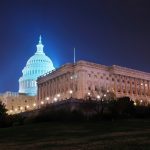In politics, a landslide refers to an election where one candidate or party wins by an overwhelming margin, far exceeding expectations or predictions. A landslide victory transforms the political landscape suddenly and decisively, similar to how a natural landslide reshapes physical terrain. While there is no strict numerical threshold that defines a landslide, the term typically indicates a surprisingly significant electoral triumph.
These decisive victories carry important implications beyond the simple win. Political parties often try to capitalize on landslide momentum to advance their legislative agendas, as these results can signal strong public mandate for their policies. In presidential systems, landslide wins may also help the victorious party gain control of legislative bodies, creating more favorable conditions for implementing their platform.
Despite frequent use of the term in media coverage, “landslide” remains somewhat subjective and contextual. What constitutes a landslide can vary based on historical voting patterns, pre-election expectations, and the specific electoral system. For example, in the U.S. Electoral College system, a substantial victory margin might be described as a landslide even if the popular vote was much closer.
Defining a Landslide in Politics
The concept of a landslide in politics has specific meanings across different electoral systems and varies by country and historical context. Political landslides generally indicate exceptional voter support and significant margins of victory.
What Is a Landslide Victory?
A landslide victory occurs when a candidate or party wins an election by an overwhelming margin against their opponents. While no universal mathematical threshold exists, political analysts typically consider victories with margins of 10-15 percentage points or more as landslides.
In presidential systems like the United States, landslides often involve winning both the popular vote and a substantial majority in the Electoral College. For example, when Ronald Reagan defeated Jimmy Carter in 1980, he secured 489 electoral votes to Carter’s 49.
The term draws from the natural phenomenon of landslides, suggesting a dramatic shift in the political landscape. Media organizations frequently use this term to describe unexpectedly decisive election results that reshape political power dynamics.
Key Characteristics of Landslide Elections
Landslide elections typically feature several distinctive elements. First, they show overwhelming support for one candidate or party across diverse demographic groups and geographic regions.
Second, landslides often indicate strong voter turnout or enthusiasm, with supporters highly motivated to participate in the electoral process. This can include voters crossing traditional party lines.
Third, these victories frequently occur during periods of significant social, economic, or political change. Economic crises, social upheaval, or scandals affecting incumbent parties can trigger voter realignment.
Lastly, landslide elections commonly produce “coattail effects,” where a popular candidate’s success helps other members of their party win down-ballot races. This amplifies the winning party’s power by securing control of multiple branches of government.
How the Electoral System Shapes Landslides
Different electoral systems produce varying types of landslides. In first-past-the-post systems like those in the UK and US, a party can achieve a landslide in parliamentary seats or electoral votes without winning an overwhelming percentage of the popular vote.
For instance, in parliamentary systems, a party winning 45% of votes might secure 60-70% of legislative seats, creating a perception of a landslide despite not winning a majority of votes. This occurred in the UK’s 1983 election when Margaret Thatcher’s Conservatives won 61% of seats with only 42% of votes.
Proportional representation systems, common in many European countries, make traditional landslides less common as seat allocation more closely mirrors vote percentages. In these systems, landslides manifest as coalition-building advantages rather than overwhelming seat majorities.
The definition of a landslide also varies by historical context and country size. In some nations, a 5% margin might constitute a landslide, while others require much larger gaps to earn this distinction.
Causes and Impacts of Political Landslides
Political landslides reshape the power dynamics in democratic systems through their dramatic shifting of electoral results. These decisive victories create ripple effects that influence governance, accountability structures, and the fundamental relationship between voters and their representatives.
Mandates and the Popular Will
Landslide victories often grant winners a perceived mandate from voters. This perception of broad public support can strengthen a candidate’s position when implementing policy agendas. Presidents who win by substantial margins frequently claim their victory represents a clear directive from the electorate.
However, the connection between electoral margins and actual policy support is complex. Voters may select candidates for various reasons beyond full endorsement of their platform.
Research shows that landslides sometimes reflect rejection of opponents rather than enthusiasm for winners. This distinction matters when leaders interpret their victory as wholesale approval of specific policies.
The mandate concept remains powerful despite these nuances. FDR’s 1936 landslide victory helped justify New Deal expansions, while Reagan’s 1984 win bolstered his conservative agenda.
Effects on Opposition Parties
Landslide defeats can devastate opposition parties, triggering leadership changes and identity crises. Major electoral losses often spark internal debates about ideological direction and campaign strategies.
These defeats can force beneficial transformations. The Democratic Party’s overhaul following Reagan’s 1984 landslide helped position it for Clinton’s 1992 victory.
Conversely, opposition collapse may harm democratic systems by weakening checks on power. Effective democracies need strong opposition voices to challenge governing parties.
The psychological impact on opposition supporters shouldn’t be underestimated. Dramatic losses can demoralize voters and reduce future participation, potentially creating a cycle of electoral weakness.
Implications for Leadership and Accountability
Leaders who win landslides may interpret their victory as reduced need for compromise. This can lead to bold policy moves but also potential overreach if they misinterpret voter intentions.
The lack of competitive pressure may weaken accountability mechanisms. Presidents with overwhelming support face fewer incentives to respond to minority concerns or moderate their approaches.
History shows mixed outcomes from such situations. Some landslide winners become more responsive to build broader coalitions, while others become less receptive to criticism.
The media’s role changes following landslides. Press coverage may become less critical when leaders enjoy high popularity, further reducing accountability pressures.
Role of the Electoral College and Electoral Votes
In American presidential elections, landslides look different through the Electoral College lens. A candidate can win decisively in electoral votes while securing a modest popular vote margin.
Reagan’s 1984 victory illustrates this dynamic perfectly – he won 49 states and 525 electoral votes while receiving 58.8% of the popular vote. This amplification effect can exaggerate perceived mandates.
The Electoral College system can create geographic patterns in landslides. Presidential candidates who perform well across diverse regions build electoral vote advantages that appear more decisive than raw vote totals suggest.
This system influences campaign strategies. Candidates focus on competitive states rather than running up margins in safe territories, potentially making landslides harder to achieve in modern polarized politics.
Historical Examples of Landslides in Politics
Political landslides represent overwhelming victories where one candidate or party secures a decisive win with a large margin. These victories often signal major shifts in voter sentiment and can reshape political landscapes.
Ronald Reagan and the 1984 U.S. Presidential Election
The 1984 U.S. presidential election stands as one of the most significant landslide victories in American political history. Ronald Reagan, the incumbent Republican president, defeated Democratic challenger Walter Mondale by winning 49 out of 50 states.
Reagan captured 525 electoral votes compared to Mondale’s mere 13, which came solely from Minnesota (Mondale’s home state) and the District of Columbia. The popular vote was equally decisive, with Reagan securing 58.8% to Mondale’s 40.6%.
This landslide reflected strong public approval of Reagan’s first-term policies and economic recovery. His campaign message of “Morning in America” resonated with voters across traditional party lines.
The magnitude of this victory gave Reagan a clear mandate to continue his conservative agenda during his second term. Political analysts often cite this election as the textbook definition of a landslide in modern American politics.
Tony Blair and the Labour Party’s 1997 Win
The 1997 British general election resulted in a historic landslide for Tony Blair and the Labour Party after 18 years of Conservative rule. Labour won 418 seats in Parliament, giving them a massive 179-seat majority.
This victory marked the largest majority for any party in British politics since 1935. The Conservative Party, led by John Major, suffered its worst defeat since 1906, winning only 165 seats with several prominent ministers losing their constituencies.
Blair’s “New Labour” platform appealed to middle-class voters who had previously supported Conservatives. His campaign promised modernization while maintaining fiscal responsibility, effectively expanding Labour’s traditional base.
The scale of this landslide transformed British politics for a decade. Labour’s commanding majority allowed Blair to implement significant constitutional reforms and domestic policy changes with limited parliamentary opposition.
Consequences for Political Parties and the Political Landscape
Landslide victories reshape power dynamics across the political spectrum, creating ripple effects that can last for generations and fundamentally alter how parties operate.
Shifts in Power and Decision-Making
When a party achieves a landslide victory, it gains substantial leverage in policy implementation. The winning party often interprets the large margin as a mandate from voters to pursue its agenda aggressively. This perception of voter approval emboldens leaders to push forward with more ambitious or controversial legislation.
Within government institutions, the dominant party can control key committees, leadership positions, and legislative priorities. The opposition becomes marginalized, with limited ability to block initiatives or shape policy outcomes.
Decision-making processes change significantly. The victorious party may bypass traditional compromise mechanisms, believing the election results justify a more unilateral approach. This power shift can lead to rapid policy changes in areas like healthcare, taxation, or social programs.
Impact on Future Elections and Electoral Districts
Landslide victories frequently trigger redistricting advantages for the winning party. When combined with control of state legislatures, the dominant party can redraw electoral boundaries to favor their candidates in future races.
Voter psychology changes after landslides. Supporters of the winning party feel validated and may become more politically active. Conversely, opposition voters might become discouraged and less likely to participate in subsequent elections.
Recruitment patterns shift dramatically. The winning party attracts strong candidates eager to join a successful movement. The losing party often struggles to recruit quality candidates willing to face steep odds.
Fund-raising disparities widen after landslides. Donors gravitate toward the winning party, perceiving it as a better investment. This creates a financial advantage that compounds the electoral advantage already gained.
Long-Term Changes to Party Systems
Landslide defeats often force losing parties to undergo painful but necessary reforms. The GOP’s losses in 1964 and the Democratic defeats in 1972 and 1984 triggered significant ideological shifts and strategic realignments.
Party identities evolve in response to landslides. Losing parties may moderate their positions or rebrand themselves to appeal to a broader electorate. The Conservative Party in the UK underwent such transformations after major defeats.
The political landscape itself can be permanently altered. New coalitions form, and voter allegiances shift. Geographic voting patterns may change as certain regions become more firmly aligned with one party.
Internal party structures adapt after landslides. Leadership changes occur, with new voices emerging to guide recovery efforts. Grassroots organizations and activist groups gain influence in determining the new direction.





